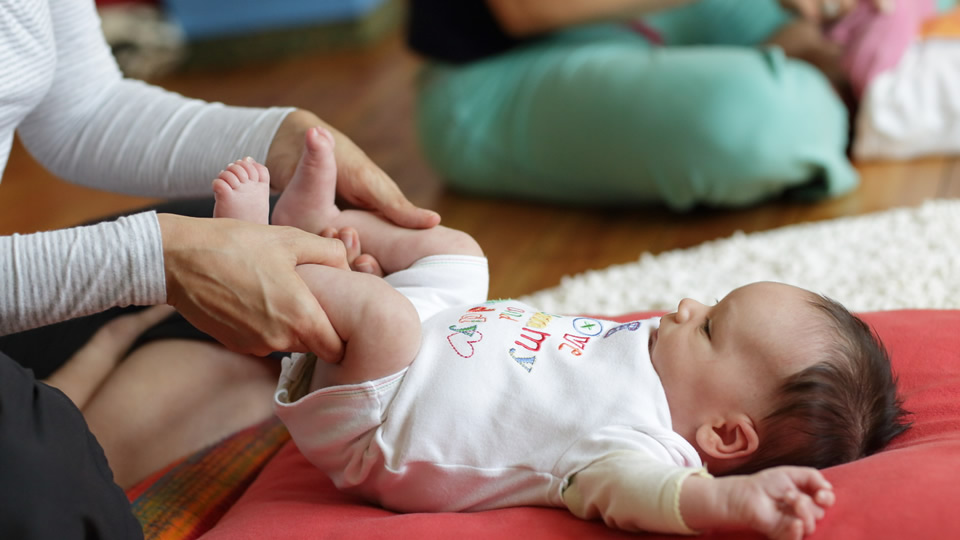
Eye to eye contact is privileged in our visual culture. Images of adorable gazing into babies’ eyes never fail to fascinate. Rightly so. But many new parents miss the early wonder of seeing their babies as “captivating communicators”. They stare at their newborns, wondering how to engage with these little aliens who cry their distress. Emotional numbness, made worse by post-birth challenges, hurts because all parents want to express their love for their babies.
Love at first sight with a new baby is celebrated in poems but many parents do not experience it right away. Falling in love with one’s baby is often more a matter of patience and perseverance, observation and learning an unfamiliar body-based language. The great American paediatrician Berry Brazelton felt inspired to develop simple techniques that elicited newborns’ engagement with their parents and revealed ‘the wonderful talents of newborns’ as innate communicators. Far from being a ‘tabula rasa’, a blank slate on which knowledge is engraved from scratch, a newborn baby is a complex, aware creature already shaped by interactions in the womb. In the last half century, thankfully, the past misrepresentations of newborns as inept passive recipients of care have been fading. Babies are actively showing us what they need to grow well, and once we grasp it, we get irresistibly captivated.
At Birthlight we privilege the tactile language of “holding and handling” as the most basic form of “attunement”, getting close through experiencing the cascades of physiological effects derived from body contact
At Birthlight we privilege the tactile language of “holding and handling” as the most basic form of “attunement”, getting close through experiencing the cascades of physiological effects derived from body contact. This has gone mainstream in the positive post-birth practice of skin-to-skin, and baby wearing, the most ancient way of calming babies, has found a new place in the global culture of baby care. Yet among many mutual benefits of holding babies close, active communication between holder and baby is perhaps the least publicised and yet most fundamental for growing the connection that for any reason could not be experienced at or after birth.
Before parents feel ready to start infant massage, there are many small interactions, integrated in daily baby care, that can gradually help them see and feel their babies’ love language. It’s not a matter of ‘doing’ anything to the babies but of ‘undoing’ tension and fear of ‘not doing it right’. All babies, even the most traumatised ones, respond to relaxed holding, even more if a raised pitch sing song voice (motherease/parentease) and a smiling face are added. The latter can feel impossible to some new mothers. But they work their magic in triggering babies’ effusive responses, like rope ladders leading to a treasure trove. There is no telling which interactive practice will open the door into the space of captivation that babies are masters of, but heart expanding rewards are there for all to enjoy.
Here are a few examples of ‘Active Bonding’ practices included in birthlight baby yoga
with babies 0 to 4 months or older babies recovering from traumatic experiences.
- ‘Dry massage Hello’ (baby can be fully clothed). A few long strokes with relaxed hands from the baby’s head to toes, as if making a velvet cloak, can be synchronised with the caregiver’s breath: get ready, inhale, exhale in each down stroke. The baby may or may not respond with a gaze but facial expressions and physical responses can be observed. If possible, an ‘AAAh of delight’ or ‘OOH of surprise’ sound can be added: this helps babies engage actively. Interaction is embodied on both sides.
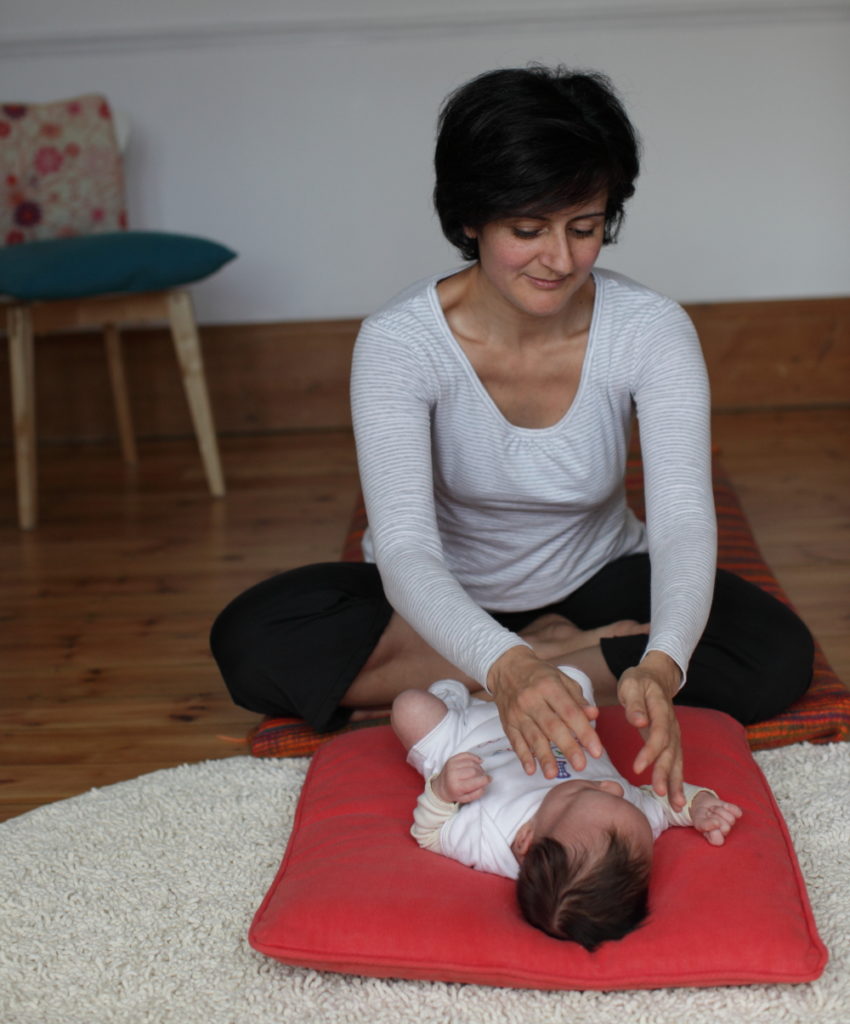
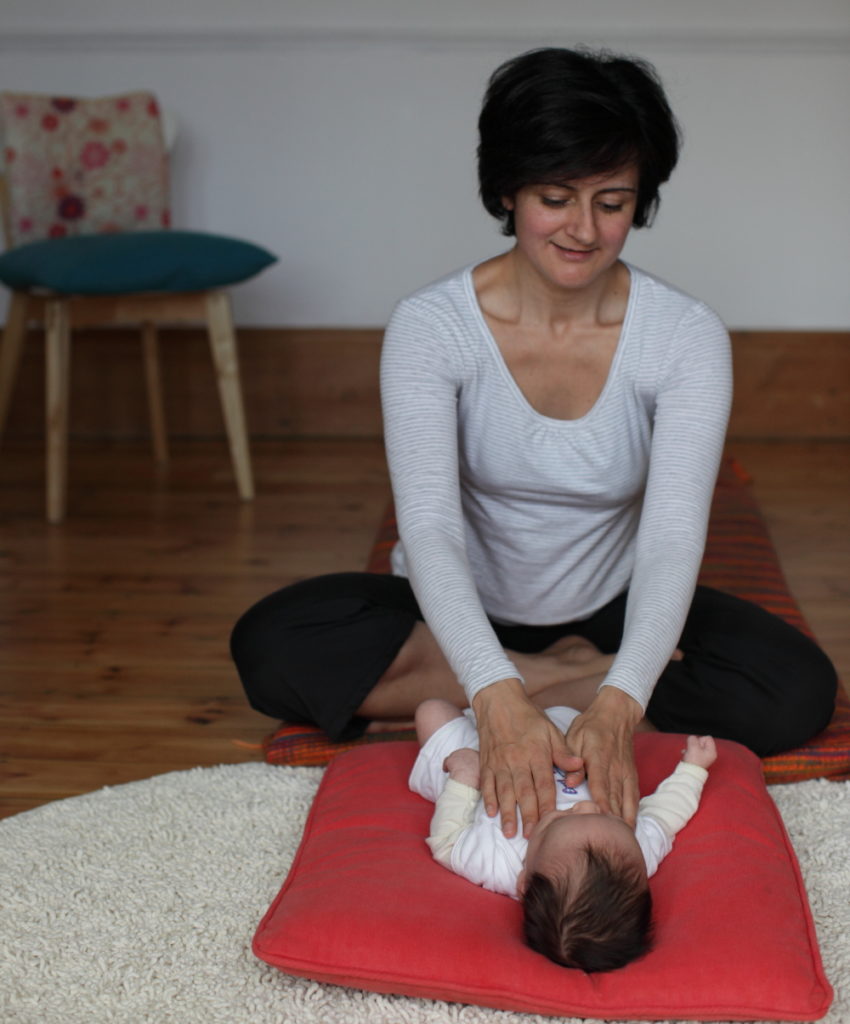
- Knee press and leg release (Baby Yoga first hip sequence)
With the baby lying down on the floor or on a table, hold your baby’s lower legs and bend their legs in a gentle ‘knees to chest’ movement then release allowing them to stretch their legs out. There are positive effects of this action for easing digestion, but it is also a way to observe the baby’s reactions and respond to them: is pressure too strong? Too light? What kind of rhythm does your baby like? Getting it ‘just right’ is shown on baby’s face. As pressure on the legs is released, your baby is likely to show you the leg movements that newborns use to grow stronger, as they already did in the womb. As babies become aware of caregivers watching them exert themselves, they engage in captivating antics.
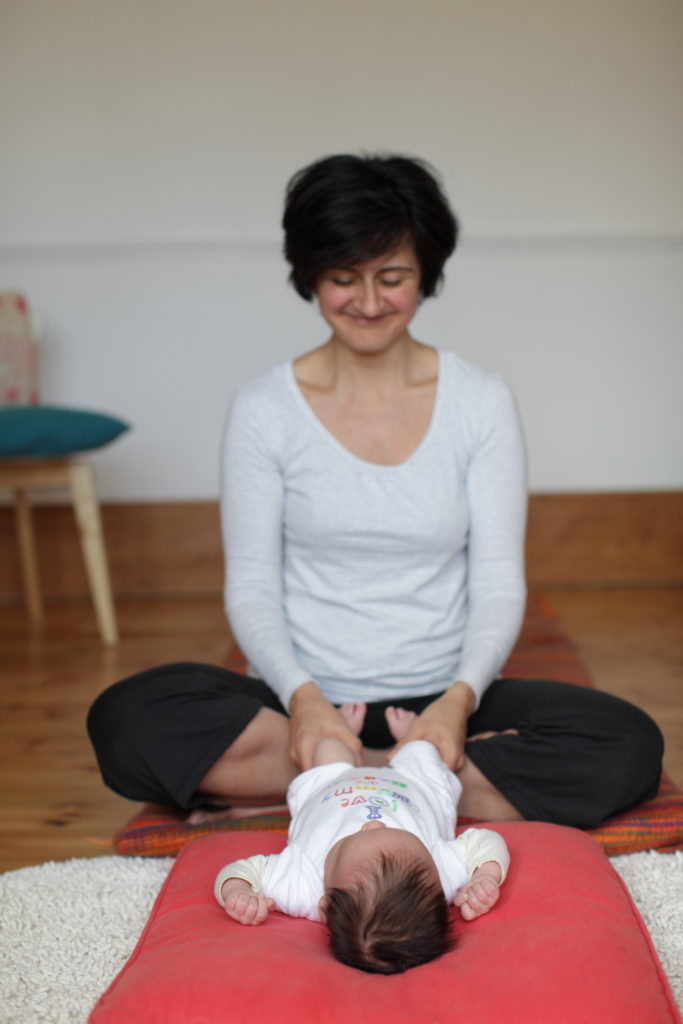
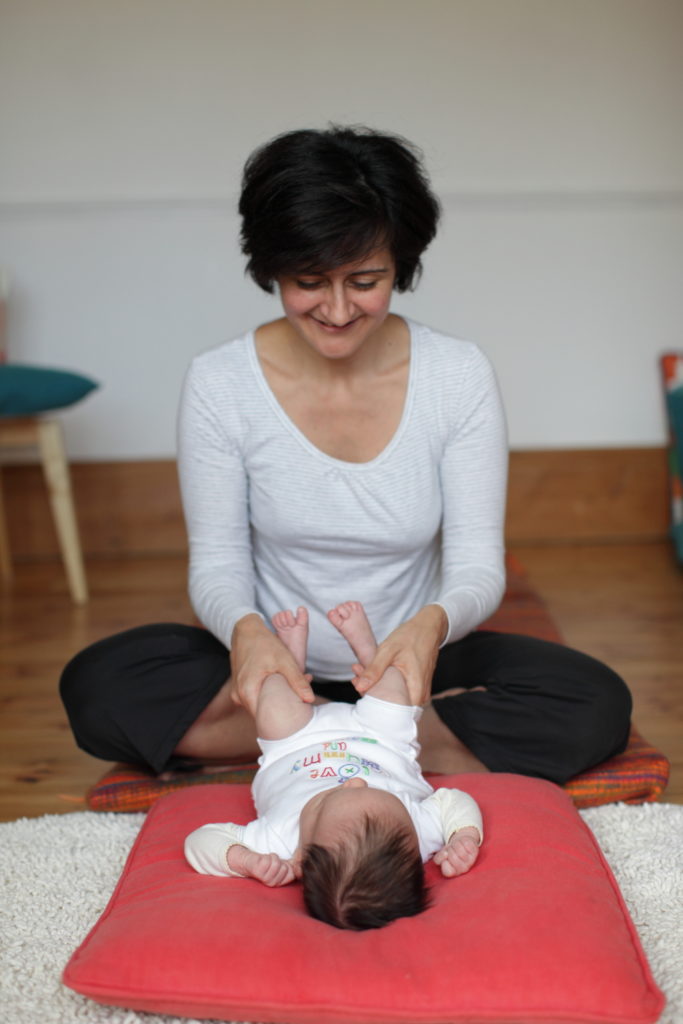
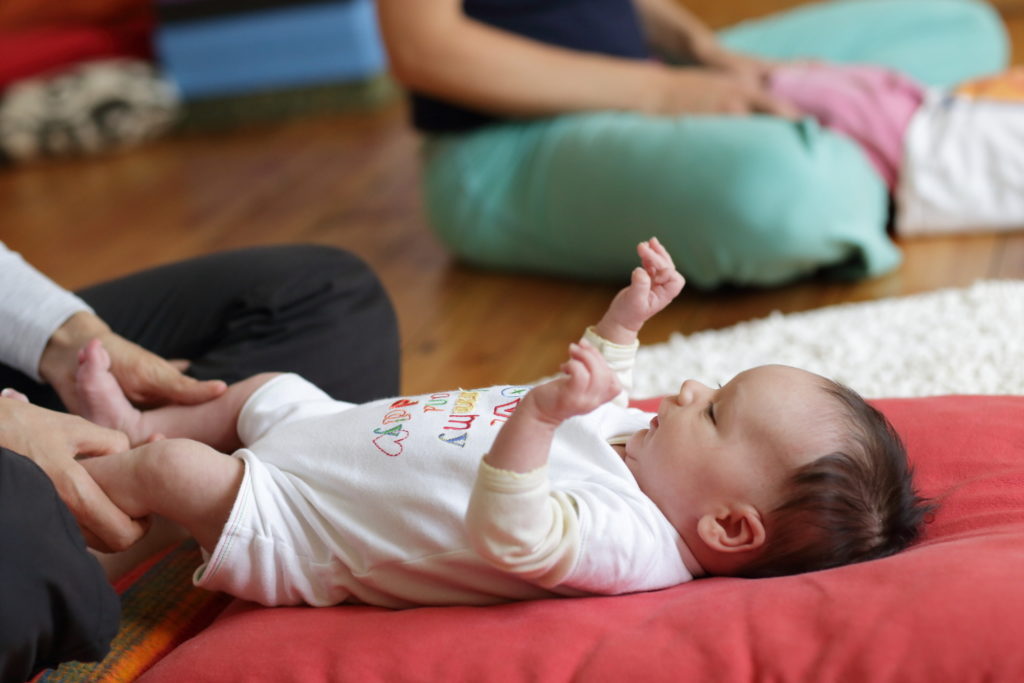
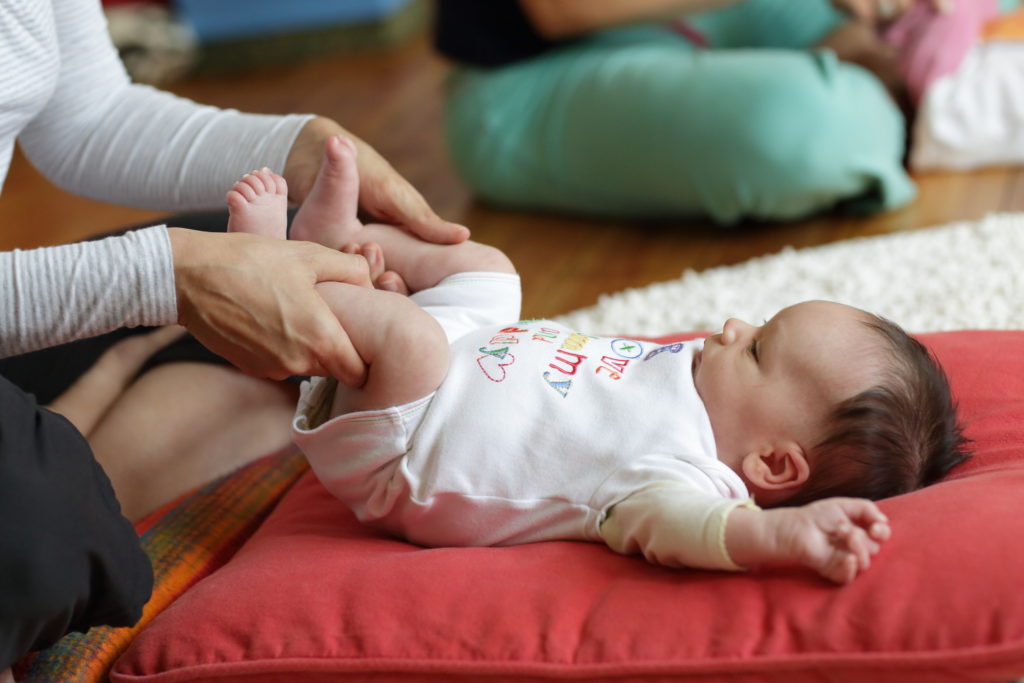
- Cradle hold and rocking rhythms (with shoulders relaxed)
Forming a cradle with loosely bent arms to hold a newborn is a universal human act.
In our global culture, interactions with babies are often mediated by contraptions, gadgets and soft toys. Going back to the basics of a cradling hold with a focus on relaxing one’s shoulders and slowing down one’s breath can be a way of discovering the wonder of a shared relaxation response. The baby feels the caregiver’s relaxation, responds with relaxation through innate empathy and this in turns amplifies the caregiver’s initial actions. As an essential yoga practice, the connection experienced in this first ‘joint relaxation’ is at the same time physical, psychological and mental.
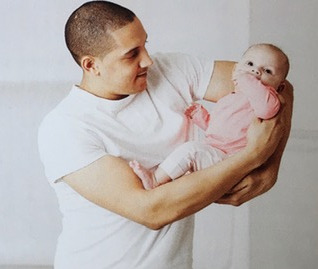
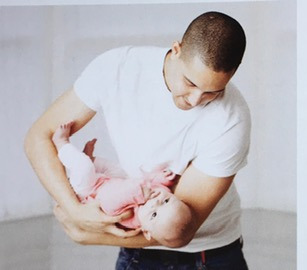
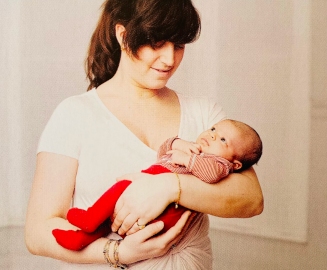
- For NBO training courses visit www.brazelton.co.uk › courses › nbo